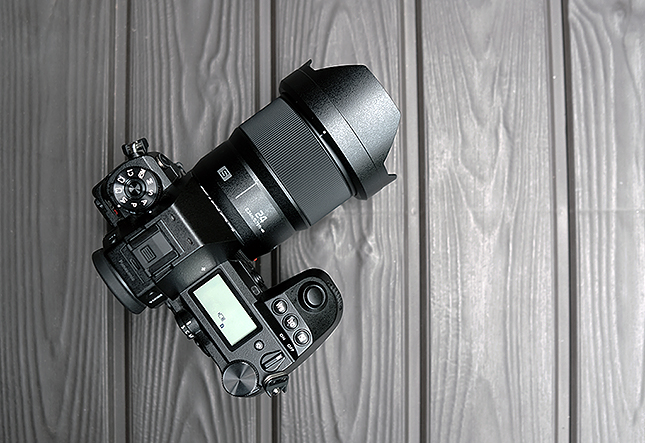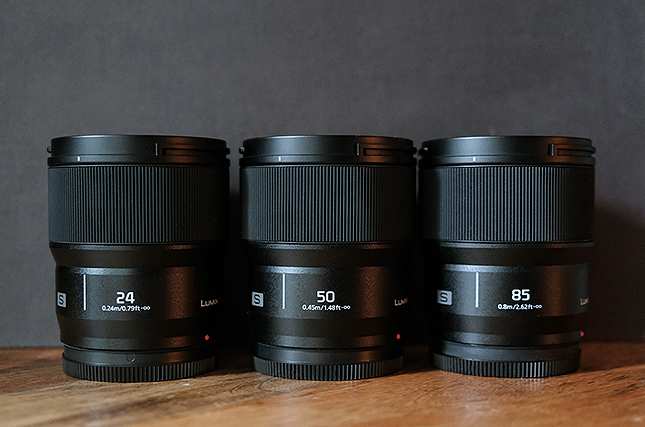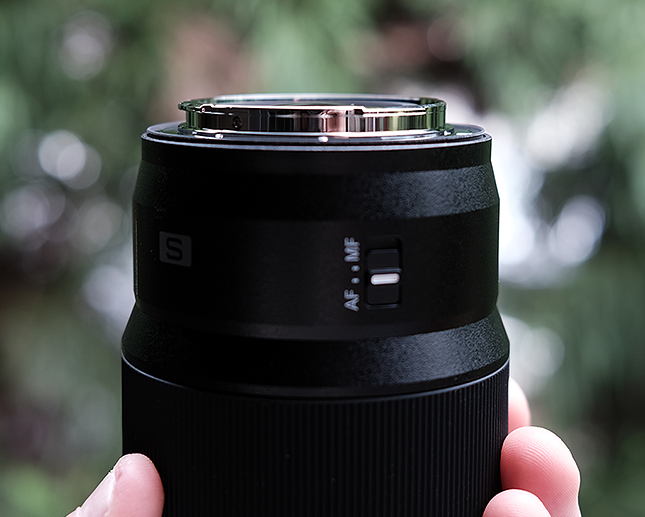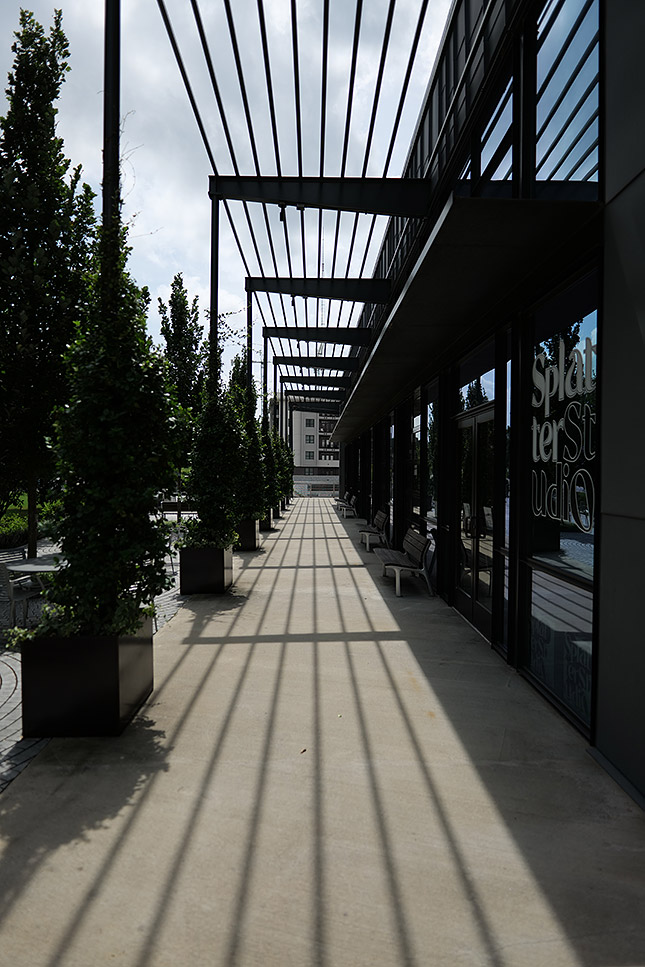Hands-on with Panasonic’s new full-frame mirrorless lens, the LUMIX S 24mm f/1.8 S (Sample Gallery)
posted Tuesday, August 31, 2021 at 10:00 PM EDT
Click here to browse our
Panasonic S 24mm f/1.8 Sample Gallery

Back in July, Panasonic announced a compact and affordable 50mm f/1.8 S lens for their full-frame S series cameras. Alongside this lens, they mentioned two more f/1.8 primes were in the works, a 24mm and a 35mm. Today, the 24mm flavor makes its debut, and much like the 50mm f/1.8 S and previous 85mm f/1.8 S lenses before it, the new Lumix 24mm f/1.8 S lens is surprisingly compact and lightweight for a fast, full-frame-format wide-angle prime. The new 24mm f/1.8 S lens offers a versatile focal length, one that's a popular choice for landscape photography. With the addition of a rather fast f/1.8 aperture, the lens is also well-suited for nighttime photography as well as other low-light situations -- the combination of a wide-angle perspective and good low-light performance make this a good choice for shooting indoors and other cramped locations.
Along with the forthcoming 35mm f/1.8 lens, this family of f/1.8 primes all purposefully share a similar size, weight and overall handling characteristics, making it simpler to exchange lenses quickly and easily without requiring much, if any, camera rig adjustments, such as to balance. This is particularly useful in video applications, such as with gimbals, where camera balance is an important operability factor.

Design & Handling
Much like the earlier 50mm and 85mm f/1.8 primes, the Lumix S 24mm f/1.8 lens is deliberately designed to share a similar size, shape and weight to these other f/1.8 primes. For still photographers, this is a less critical design feature, but for video shooters, this can be a handy benefit. Oftentimes, cinematographers will rig up their camera with follow-focus gears or need to precisely balance their camera and lens on tripod heads, gimbals and other support rigs. Having similarly-sized and similarly-weighted lenses makes it much less time-consuming to swap around lenses as needed for a given shoot.
The benefit here for still photographers, however, is that they get a lightweight, compact and easy-to-carry wide-angle prime that still has a nice, fast aperture. The lens feels designed particularly well designed for the smaller Lumix S5 full-frame camera, while the lens feels a bit dwarfed by the larger S1R camera I used. It goes without saying that this compact lens feels comfortable and unintrusive on this larger camera body, seeing as it's only about three inches in length and weighs a mere 310g (0.68lbs.).

As expected, in the hand, the new Lumix 24mm f/1.8 S lens feels very similar to its earlier 50mm and 85mm sibling lenses. In fact, without their respective lens hoods attached, you'd be hard-pressed to tell each lens apart without seeing the focal length labeling on the top of the lens (and branded ring at the front). The 24mm lens, unlike the longer focal length primes, uses a petal-shaped lens hood due to the wide-angle field of view. Without the lens hoods, all three lenses (and presumable the upcoming 35mm lens, too) are exactly the same length, at 82mm (3.23in.). They also have the same diameter (73.6mm / 2.9in.) and share the same 67mm screw-on filter thread size, which is yet another pleasing usability benefit -- you can easily share the same filters between all of these f/1.8 primes.

In terms of physical construction, the lens barrel on the 24mm f/1.8 feels made entirely out of strong and sturdy yet lightweight plastic rather than metal. This is, again, similar to the other Panasonic f/1.8 primes and helps not only keep the weight down but also, I imagine, the cost, as well. Do not get the wrong impression, however. Despite the plastic exterior, the lens feels very solidly built and not at all "plasticky" or cheap-feeling. The lens does have a metal lens mount, like its sibling lenses, and also features durable dust- and splash-resistant design with seals within the lens, at either end of the focusing ring and at the lens mount. The lens is built to withstand a professional workflow and harsh conditions, including freezing temperatures down to -10 deg C (14 deg F).

When it comes to other exterior design features, the Lumix 24mm f/1.8 S lens is rather spartan, much like its sibling lenses. The lens really only has a large, rubberized focusing ring and a single AF/MF switch on the side of the barrel. In use, the focusing ring offers a nice amount of grip and rotates very smoothly, with a satisfying amount of resistance that makes it easy to do controlled, precise focusing changes. One notable missing feature is any sort of marked focusing distance scale on the lens itself; for these details, you'll need to use the on-screen focusing scale on a Lumix S-series camera.
Optical Design & Image Quality
Though the exteriors are nearly identical, the optical formulas of these f/1.8 primes differ. The 24mm f/1.8 S lens utilizes more lens elements overall than the two other longer lenses. Here, the 24mm lens uses a total of 12 optical elements situated into 11 groups, and includes a range of exotic, specialized lenses, such as three aspherical elements, three Extra-Low Dispersion (ED) elements and one Ultra Extra-Low Dispersion (UED) element. According to Panasonic, the aspherical elements help ensure sharp image quality performance across the frame, while the ED and UED elements help suppress chromatic aberrations. The aspherical elements, along with the 9-bladed circular aperture diaphragm, help ensure pleasing bokeh.

I've only been hands-on with the Lumix S 24mm f/1.8 for a few days, so it's a bit early to make any final conclusions about image quality. However, based on an initial impression, the new 24m f/1.8 lens performs well. Images appear quite sharp in the center of the frame, even at f/1.8. Despite the wide-angle field of view, the f/1.8 can still make for a fairly shallow depth of field in certain situations -- which is especially noticeable on the high-resolution Lumix S1R camera I used with the lens. It's quite easy to have images with soft corners merely due to the shallow depth of field. That being said, in shots where I was able to get proper a corner-to-corner plane of focus, corner sharpness is quite good, even wide-open. There's still a good amount of detail away from the center, though stopping down does help a bit in sharpening the corners. Again, it's a bit early for a final conclusion with regard to sharpness, however.

In other areas, namely vignetting and purple fringing, the 24mm f/1.8 S does show some issues at certain apertures and in certain situations. Vignetting is quite noticeable when shooting wide-open, though to my tastes, it's not overly distracting. If you're photographing a scene where you want crisp edge-to-edge sharpness and even brightness, you're likely to be stopping the lens down anyway. And indeed, stopping the lens down to about at least f/2.8 helps brighten up the corner shading. Meanwhile, purple fringing can be quite noticeable, especially when shooting at f/1.8 in harsh, high-contrast situations. For example, photographing in a forested area with bright sun shining through the trees, you can see some purple fringing appear along high-contrast edges, such a backlit leaves and tree branches, when shooting at f/1.8. Chromatic aberration is generally quite mild, though some axial CA can also be seen when shooting at the wider apertures in certain situations.

Focusing
Much like the other f/1.8 primes, the 24mm f/1.8 S lens uses a linear AF motor, which offers fast and silent autofocusing performance. Like many Panasonic Lumix lenses, the 24mm f/1.8 lens supports Lumix cameras' high-speed contrast-detection AF system with sensor drives at up to 240fps. In the field, AF performance feels very fast and very precise. The lens can also focus quite closely, with a minimum focus distance of 0.24m (0.79 ft.) -- which enables nice, dramatic close-up wide-angle shots -- and even with a rather broad focusing range, the lens is swift to rack focus from close-focus to infinity. Small focus changes feel nearly instantaneous in most situations (very dark scenes or very low-contrast subjects can slow down focusing speed to a degree).

With manual focus, the lens supports both a linear and non-linear manual focusing behavior, a setting that can be adjusted in-camera. In non-linear mode, the focus ring responds according to how quickly you rotate the focus ring, whereas in linear mode, focus responds to the rotational angle of the focus ring. You can adjust the sensitivity of the linear focusing mode in-camera as well. In other words, how much focus changes per unit amount of ring rotation can be adjusted, from 90-degrees to 360-degree in 30-degree increments.
For video shooters, the lens is also designed with special attention to minimize focus breathing, and the lens's micro-step aperture control allows for smooth iris control if lighting/exposure changes while recording.

Pricing & Availability
The new Panasonic Lumix S 24mm f/1.8 lens is scheduled to go on sale in mid-October with a retail price of $899.99. This wide-angle prime is a bit more expensive than its longer f/1.8 siblings, with the 50mm f/1.8 S coming in at around $450 USD and the 85mm f/1.8 S at around $600 USD.
For more information, as well as a range of real-world samples images, head over to our Panasonic 24mm f/1.8 S Review and Sample Gallery.
